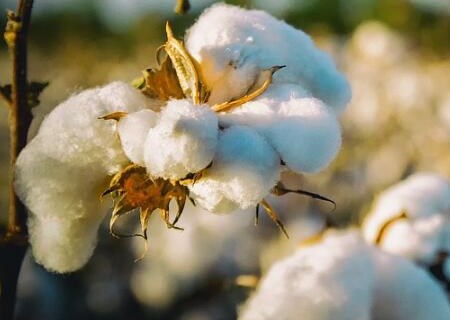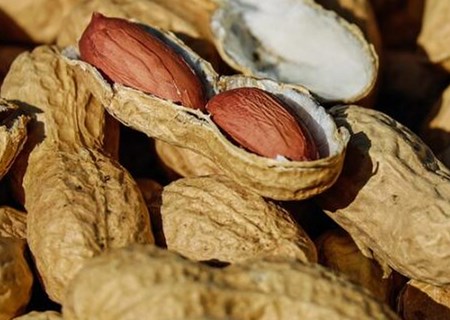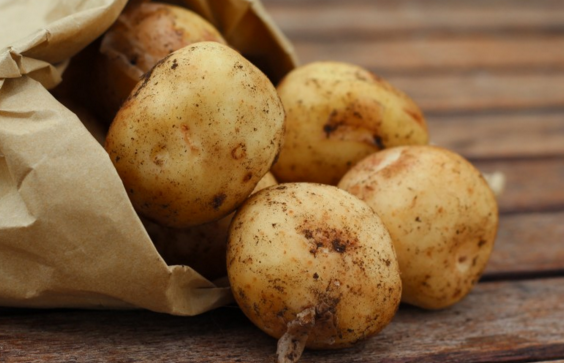What do you need to pay attention to when planting cotton in Malvaceae? How to deal with rain in the emergence period of cotton?
Cotton is a mallow family, cultivated in tropical areas can grow up to 6 meters high, usually 1 to 2 meters. The flowers are milky white and turn crimson soon after flowering and then wither, leaving a small green capsule called cotton boll. So what do you need to pay attention to when growing cotton? How to deal with rain in the emergence period of cotton?

I. what should be paid attention to in cotton planting
1. Timely determination of seedlings
Seedling shortage is better than grass shortage, timely seedling setting can prevent the emergence of tall seedlings, timely solve the contradictions of cotton seedling crowding, fertilizer, glory and water, and facilitate timely ploughing and pest control. It plays a good role in promoting the root growth of cotton seedlings, preventing dead seedlings and promoting early development. In general, the seedling of cotton should be fixed when it grows a true leaf, and in the strip sowing cotton field, the seedling can be fixed at one time with a bamboo pole separated from the standard plant, and the uniform seedling can be selected. The setting of seedlings in saline-alkali soil can be postponed to two or three true leaves.
2. Ploughing as early as possible
Middle tillage can loosen soil, increase soil temperature, eliminate weeds, promote water ventilation, accelerate the decomposition of soil nutrients, prevent and reduce the occurrence of cotton seedling diseases, which is one of the main measures to realize the early emergence of strong cotton seedlings. The effect is especially remarkable in the open field direct seeding cotton field where the soil moisture is too high, the ground temperature is low and the soil is hardened. The frequency and depth of intertillage should be appropriate so that the soil is not hardened and there are no weeds in the field. It is generally carried out for 2 to 3 times, the cotton seedlings are shallow around, and the depth between the rows can reach 7 centimeters.
3. prevention and control of diseases and insect pests
Disease. The disease at seedling stage is the main obstacle affecting the whole and sturdiness of cotton seedlings. There are ten kinds of diseases harmful to cotton roots, including rotten roots, rotten buds, stem base rot, root rot, followed by root rot, and the main diseases that harm cotyledons, true leaves and stems are stem blight, corner spot, soft rot and so on. But the greatest impact on cotton development is: blight, anthracnose, red rot. It can cause rotten seed, rotten seed, rotten bud and root rot before cotton seedlings are unearthed. The light ones affect the growth and development of cotton seedlings, the serious ones cause a large number of dead seedlings at the seedling stage, resulting in serious lack of seedlings, broken ridges, and the serious ones cause destructive death in the whole field. Control methods: reasonable rotation, fine soil preparation, balanced fertilization, application of organic fertilizer or biological antimicrobial fertilizer, coated seeds, continuous exposure for 2-3 days before sowing, and late sowing to improve sowing quality. At the seedling stage, the root was irrigated with 80% carbendazim 200 times solution or 50% carbendazim or 70% thiophanate methyl or carbendazim or damycin. 50% carbendazim 500 times or 70% mancozeb 800 times spray can be used to control cotton red rot at boll stage.
Pests. Cotton seedling stage is mainly cotton aphid, cotton leaf mite, cotton thrips, tigers and so on. With the popularization of transgenic insect-resistant cotton, the expansion of cotton field area of wheat-cotton interplanting and cotton seed coated with velvet, the number of natural enemies of cotton pests in cotton field has increased, and the species and damage degree of cotton pests have also changed greatly. Therefore, in the prevention and control of cotton seedling pests, we should pay attention to the protection and utilization of natural enemies, distinguish different types of cotton fields, and carry out pest prediction and control respectively. Cotton seedling pest control focuses on cotton aphid. First, seeds are mixed with 3% carbofuran particles, and then omethoate is used to control cotton seedlings.
4. Proper topdressing and control of watering
Fertilize. Cotton seedling water demand accounts for only 5% of the total fertilizer needed in a lifetime, so there is generally no topdressing in cotton fields with sufficient base fertilizer and high-yield cotton fields. However, for the cotton fields with poor soil fertility and small amount of base fertilizer, the seedling fertilizer should be applied early, and the topdressing at the seedling stage should be mainly composed of available nitrogen fertilizer and mature organic fertilizer. Generally, about 5 kg of standard nitrogen fertilizer is applied per mu.
Water it. Cotton seedlings need less water, in order to promote cotton roots, cotton trees are sturdy. In the cotton field with good soil moisture, generally do not need watering, and try to postpone the first watering time, so as not to reduce the ground temperature, cause seedling disease, cause seedling weak and late. If the soil layer is 10 cm to 40 cm, the maximum soil moisture capacity is less than 50% and 55%, it should be watered in time. Watering at seedling stage, the amount of water should be small, adopt furrow irrigation, or inter-ditch irrigation, ploughing in time after watering, and break the hardening.
Second, what to do if it rains during the emergence of cotton seedlings
Remedial measures: ① micro-rainfall, generally will not form surface runoff and crust after rain, without shell breaking treatment, can rely on cotton seed germination and growth of their own energy, normal emergence. ② small amount of rainfall, light sowing hole soil crust will be produced after rain. If the rainfall time is within 3 days before and after sowing, the self-made wooden or iron drum with nail teeth can be slightly compacted after the rain is dry to break the knots. If the rainfall time is 5-6 days after sowing, the self-made wooden or iron drum with edges can be slightly rolled after the rain is dry to break the hardening; if the rainfall time is more than 7 days, only manual seedling release can be adopted to break the hardening to prevent damage to the sprouts. The cotton field of sandy soil or sandy loam soil with light soil texture of ③ has good water permeability and limited hardness of the laminated layer. When the soil on the film is slightly dry and slightly moist, the method of light rolling can be used to break the hard shell on the film. In the clay loam cotton field with heavy ④ soil texture, due to the heavy degree of soil flooding when the rainfall is heavy, the soil loose state of the lower part has been destroyed, premature overweight rolling will aggravate the soil consolidation, and the unfavorable cotton seedlings can be unearthed; when the topsoil is slightly dry, the method of artificially loosening the surface layer and the soil near the seeds can be adopted to break the consolidation and help the seedlings to be unearthed. In case of rain, cotton growers need to do a good job of ploughing, keep the soil loose and good water permeability, so that cotton seeds can germinate better.
Time: 2019-03-18 Click:
- Prev

What is the planting method and time of herbaceous peanut? What are the nutritional values?
Peanut is a leguminous crop, one of the main varieties of high-quality edible oil, also known as peanut or long fruit. Peanut is an annual herb. So do you know the planting method and time of peanuts? What are the nutritional values? Planting methods of Peanut
- Next

When is the best time to sow potatoes in Solanaceae? What is the planting method?
Potato (potato), a perennial herb of Solanaceae, is the fourth most important food crop in the world, after wheat, rice and corn, so when is the best time to sow potatoes? What is the planting method? When is the best planting time for Solanaceae potatoes?
Related
- Fuxing push coffee new agricultural production and marketing class: lack of small-scale processing plants
- Jujube rice field leisure farm deep ploughing Yilan for five years to create a space for organic food and play
- Nongyu Farm-A trial of organic papaya for brave women with advanced technology
- Four points for attention in the prevention and control of diseases and insect pests of edible fungi
- How to add nutrient solution to Edible Fungi
- Is there any good way to control edible fungus mites?
- Open Inoculation Technology of Edible Fungi
- Is there any clever way to use fertilizer for edible fungus in winter?
- What agents are used to kill the pathogens of edible fungi in the mushroom shed?
- Rapid drying of Edible Fungi

